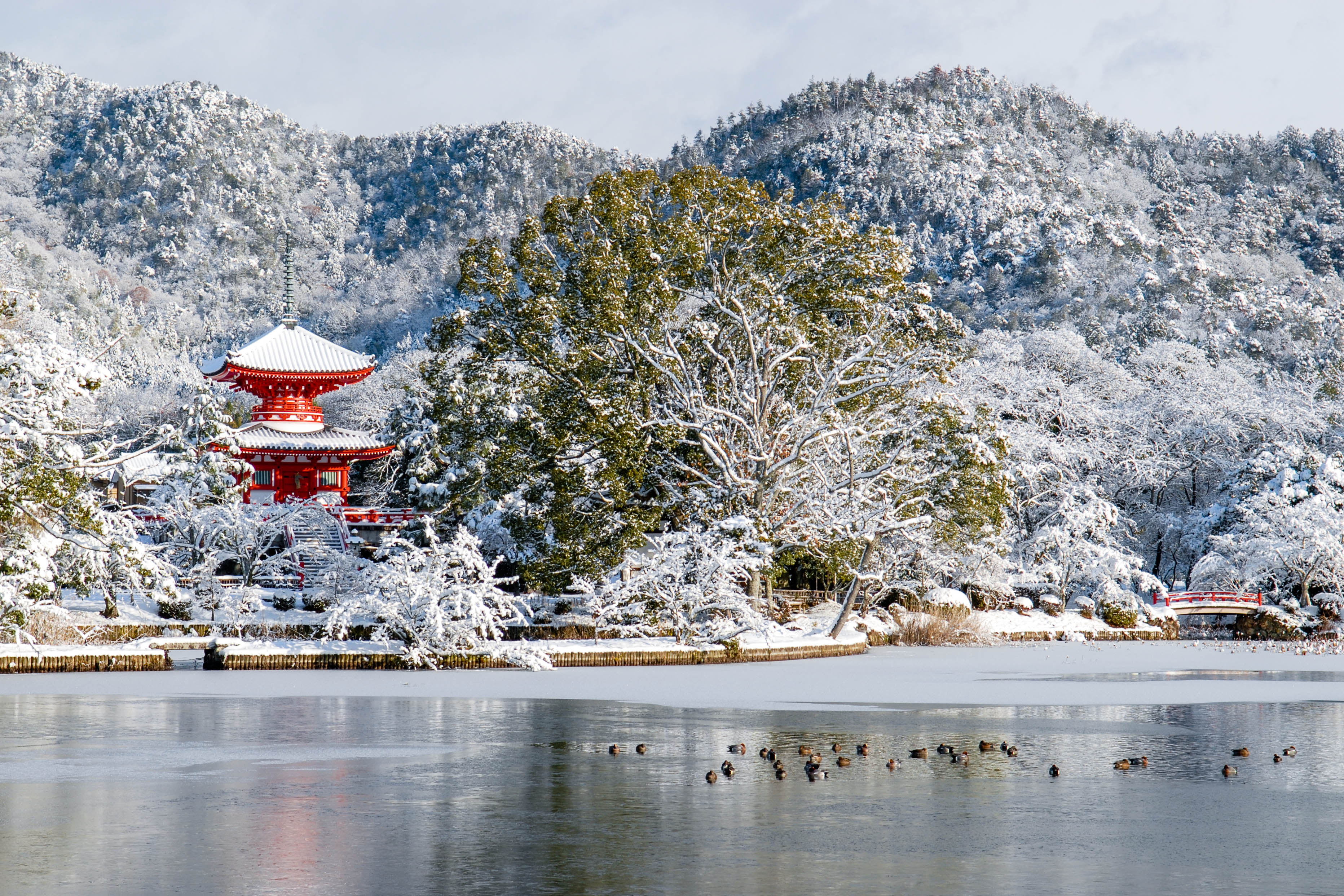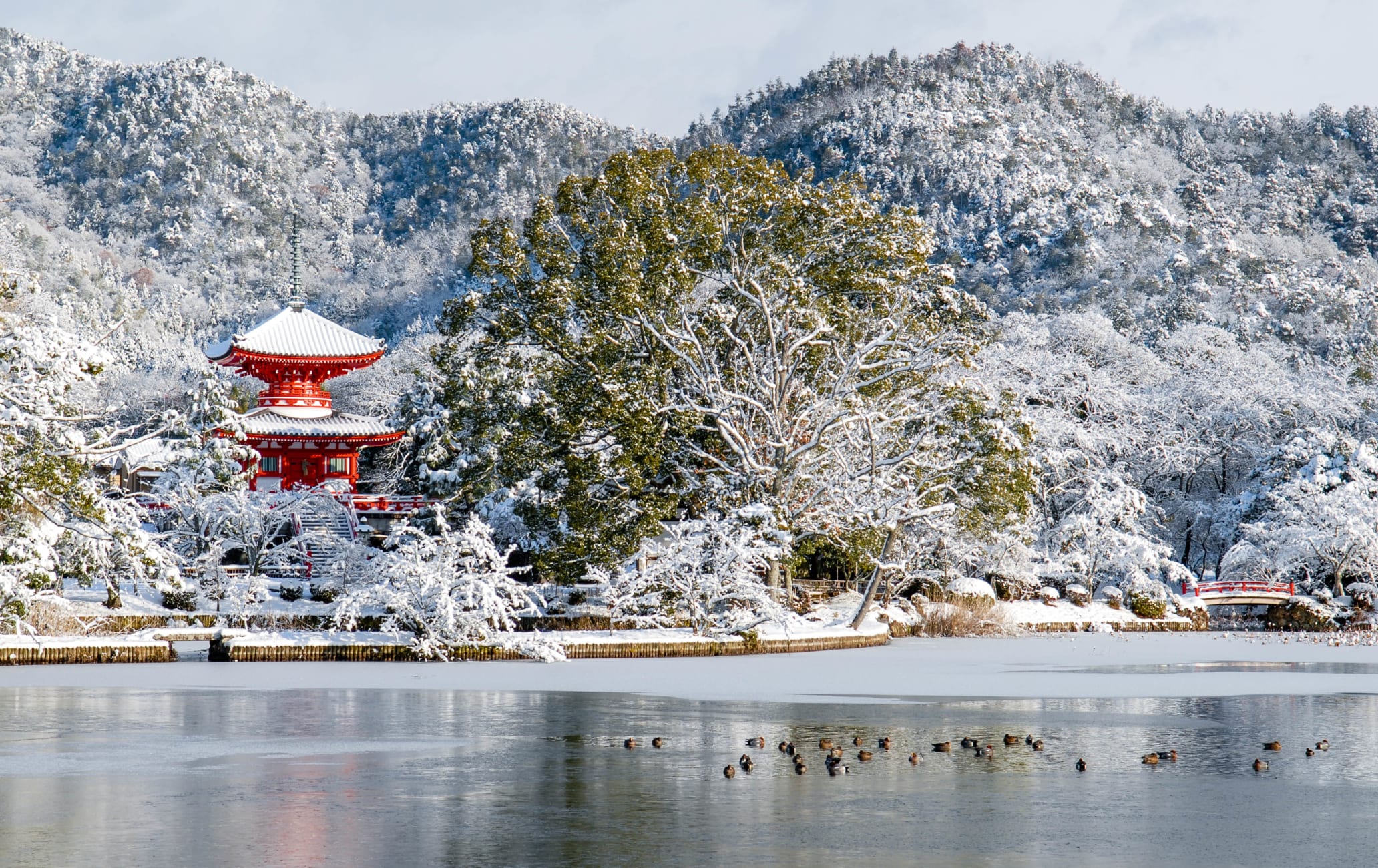©Daikakuji Temple
A former imperial villa in Kyoto turned temple
Daikakuji, a temple in the Ukyo district of Kyoto , was originally an Imperial villa, but was converted into a temple of the Shingon sect of Buddhism in 876. A number of 16th-century buildings were moved here from the Imperial Palace after a fire in the Edo period.
Don't Miss
- The moon-viewing event held each year for three days during the harvest moon
- The lovely garden, based upon Dongting Lake in China
- A visit at the height of cherry blossom or autumn leaves season
Quick Facts
Daikakuji was originally built as an imperial villa for Emperor Saga
The temple hosted peace talks during the civil wars of the Namboku-cho period
How to Get There
Daikakuji is a 15-minute walk from JR Saga-Arashiyama Station or 20 minutes from Arashiyama Station on the Keifuku Line.
Royals as abbots
Successive members of the Imperial family had occupied the position of the abbot of the temple until the early Meiji era (1868-1912), and as a consequence, the temple was also regarded as a residence of the Imperial family, and known as the Saga Imperial Palace.
The shinden (palace for the emperor's daily use) has been designated an Important Cultural Property by the Japanese government, and Osawa-no-Ike Pond is also a designated National Historic Site.
The garden of Osawa-no-Ike Pond
The temple's Osawa-no-Ike Pond garden was designed in the Chinese architectural style known as chisen-shuyu, which indicates that it is meant to be viewed from a boat. The large pond beside the garden is the oldest existing artificial pond in Japan.
Shakyo as a means of enlightenment
Today, Daikakuji attracts many worshippers as a center for practicing copying the Han'nya-Shingyo, an important Buddhist sutra known in English as The Heart Sutra.
The practice of sutra copying is called shakyo, and was introduced to the temple by Kobo Daishi. One of the temple treasures is a copy of the sutra that is said to have been written by Emperor Saga himself.
Japanese flower arrangement
The Saga Goryu school of traditional Japanese flower arrangement, or ikebana, is headquartered at Daikakuji. The school maintains its historical traditions and status while incorporating modern sensibilities, and thus is increasing in popularity year by year. A flower festival is held at the temple every year.

























































